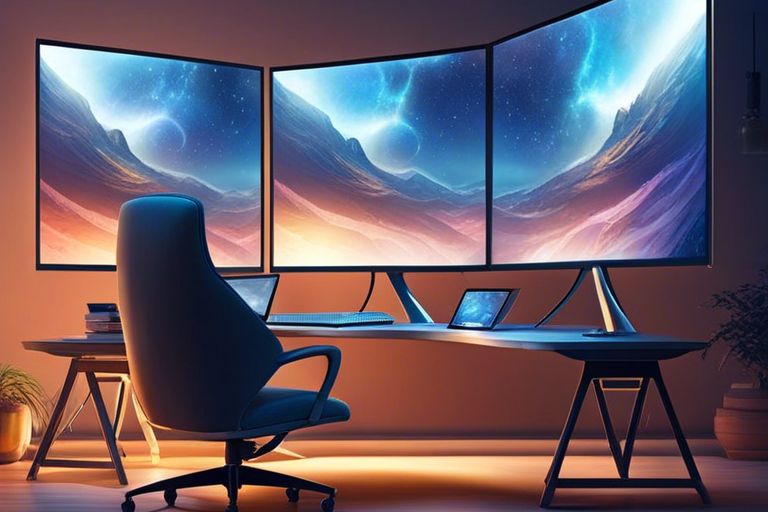Over the years, the development of technology has greatly influenced the way we consume visual content. Whether you are a gamer, graphic designer, or someone who simply enjoys watching movies, having the right monitor can greatly enhance your visual experience. With a myriad of options available in the market, choosing the right monitor can be overwhelming. Here are some tips to help you make an informed decision:
1. Consider the Display Panel:
The display panel of a monitor plays a crucial role in determining the visual quality. There are mainly three types of display panels – IPS (In-Plane Switching), TN (Twisted Nematic), and VA (Vertical Alignment). IPS panels offer superior color accuracy and viewing angles, making them ideal for graphic design and content creation. TN panels are known for their fast response times, making them suitable for gaming. VA panels strike a balance between the two, offering good color reproduction and response times.
2. Resolution Matters:
Resolution refers to the number of pixels that make up the display. Higher resolution monitors provide sharper images and more screen real estate. The most common resolutions are Full HD (1920 x 1080), Quad HD (2560 x 1440), and Ultra HD or 4K (3840 x 2160). Choose a resolution based on your usage – for gaming and multimedia consumption, a higher resolution is recommended, while for general office tasks, Full HD might suffice.
3. Refresh Rate and Response Time:
For gamers, refresh rate and response time are crucial factors to consider. A higher refresh rate, typically 144Hz or 240Hz, ensures smoother gameplay with reduced motion blur. Response time, measured in milliseconds, determines how quickly pixels can change colors. Look for monitors with low response times to minimize ghosting and motion blur in fast-paced games.
4. Connectivity Options:
Ensure that the monitor you choose has the necessary connectivity options to suit your needs. Most monitors come with HDMI, DisplayPort, and USB ports. Check if the monitor supports the devices you intend to connect, such as gaming consoles, laptops, or desktop computers.
5. Ergonomics and Additional Features:
Consider the ergonomics of the monitor, such as height adjustment, tilt, swivel, and pivot functions. A monitor with adjustable stand can help you achieve a comfortable viewing position, reducing strain on your neck and eyes. Additionally, look for features like built-in speakers, blue light filters, and flicker-free technology for added comfort during long hours of use.
By keeping these tips in mind, you can choose a monitor that suits your specific needs and enhances your visual experience, whether you are gaming, working, or enjoying multimedia content.
Keep in mind, the right monitor not only improves visual quality but also contributes to overall productivity and comfort during prolonged usage.



![Roblox Digital Gift Code for 2,200 Robux [Redeem Worldwide - Includes Exclusive Virtual Item] [Online Game Code]](https://m.media-amazon.com/images/I/51LrwIVIf7L._SY430_SX215_QL70_ML2_.jpg)